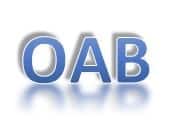What Do You Mean, OAB?
Thanks in no small part to the marketing efforts of companies that produce treatments for overactive bladder (OAB), the term “OAB” has become relatively well known among health providers and the general public alike. The fact that the term has become so common and well accepted has been a source of criticism by some who feel that it doesn’t adequately describe the symptom complex it is associated with it.

The authors of this review note that the origin of the name overactive bladder is credited to Drs. Wein and Abrams, two giants in the field of urology, particularly bladder health. It reflects their understanding of how the symptoms of urinary urgency, frequency and sometimes incontinence are perceived by patients. It also was a term they were already using with their patients to make their condition more understandable. It took away the stigma that was attached to previous terms such as “unstable bladder” that may have made patients feel that their mental stability was being questioned.
But the term also has had an influence on the way we think about and study OAB. Prior to the introduction and later acceptance of a standard definition for OAB that is based on symptoms reported by a patient, previous definitions relied on the findings of an invasive test called urodynamics. In contrast, the definition of OAB can be applied without the need for expensive and invasive testing. It can be used by specialists and general practioners alike. I like to point out that patients are generally able to self-identify all of the symptoms we associate with OAB (even if they can’t always rule out other causes of those symptoms). The change to using the term overactive bladder largely coincided with the development of recommendations that the initial evaluation of OAB should not involve advanced testing, with a history and physical exam largely sufficing.
And while it is often noted by critics that the term OAB has been used effectively for marketing purposes by the pharmaceutical industry, the term was not invented by marketers or for marketing. Rather, it has served as a useful starting point for an understanding, by both patients and physicians, that can lead to a better and more thorough understanding of just what is this thing we call “OAB”.
Colin M. Goudelocke, M.D.

